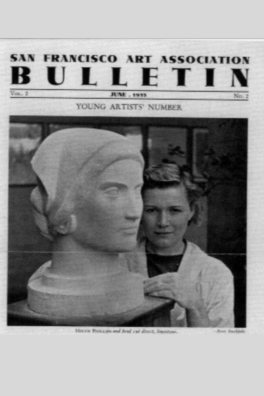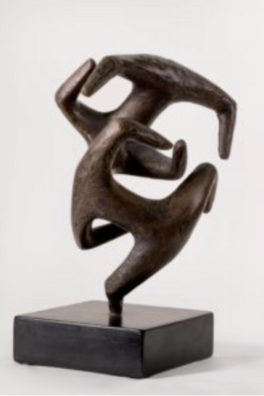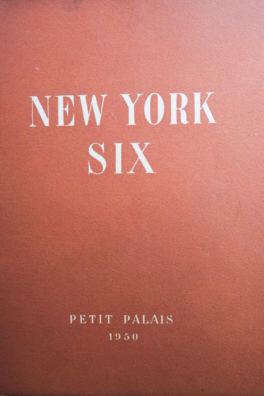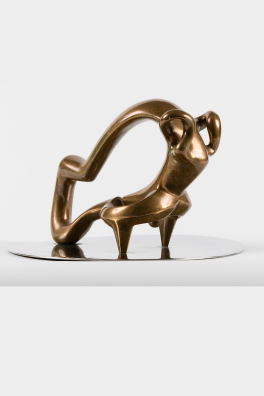Sculptor – Printmaker
Helen Phillips
Helen Elizabeth Phillips (Fresno, California,1913—New York,1995) was a sculptor and printmaker who lived and worked in San Francisco, New York and Paris. Against the historical background of the 20th century avant-garde, Phillips played an independent role, leaving a significant mark and opening new paths for future generations. Her work stands as a powerful testament to a life spent exploring the possibilities of the modernist revolution, navigating the frontiers between the Pacific and the Atlantic.
Soon after joining Stanley William Hayter’s experimental printshop, the renowned Atelier 17, Phillips abandoned the monumental style of her beginnings and evolved towards a poetic form of Surrealism. Engraving opened new horizons for her, highlighting the importance of negative space in sculpture and the vitality of the line. From the 1940s onward, she moved towards abstraction, retaining surrealist expression and inspiration in her forms. Her biomorphic sculptures characteristically evoke abstract body parts, claw-like animal forms, and imaginary plants.
Concerned with forms in perpetual motion and transformation, she later adopted a geometric unit to express a three-dimensional movement in space. This unit, when repeated, produced a seemingly endless variety of forms, columns and spirals in geometric relationships: a module of growth. The linear, lightweight sculptures in wire and aluminum tubing created towards the end of her life express the wide range and creativity of her production.
In printmaking, the striking, vivid colour of her inks she used in the 1950s and 1960s gave way to subtler, velvety tones. Relying on her remarkable spatial awareness and guided by the concepts of repetition and geometry, she explored and adopted wave patterns and moved on to relief printing, primarily linocuts.
Sculptor – Printmaker
Helen Phillips
Helen Elizabeth Phillips (Fresno, California,1913—New York,1995) was a sculptor and printmaker who lived and worked in San Francisco, New York and Paris. Against the historical background of the 20th century avant-garde, Phillips played an independent role, leaving a significant mark and opening new paths for future generations. Her work stands as a powerful testament to a life spent exploring the possibilities of the modernist revolution, navigating the frontiers between the Pacific and the Atlantic.
Soon after joining Stanley William Hayter’s experimental printshop, the renowned Atelier 17, Phillips abandoned the monumental style of her beginnings and evolved towards a poetic form of Surrealism. Engraving opened new horizons for her, highlighting the importance of negative space in sculpture and the vitality of the line. From the 1940s onward, she moved towards abstraction, retaining surrealist expression and inspiration in her forms. Her biomorphic sculptures characteristically evoke abstract body parts, claw-like animal forms, and imaginary plants.
Concerned with forms in perpetual motion and transformation, she later adopted a geometric unit to express a three-dimensional movement in space. This unit, when repeated, produced a seemingly endless variety of forms, columns and spirals in geometric relationships: a module of growth. The linear, lightweight sculptures in wire and aluminum tubing created towards the end of her life express the wide range and creativity of her production.
In printmaking, the striking, vivid colour of her inks she used in the 1950s and 1960s gave way to subtler, velvety tones. Relying on her remarkable spatial awareness and guided by the concepts of repetition and geometry, she explored and adopted wave patterns and moved on to relief printing, primarily linocuts.




